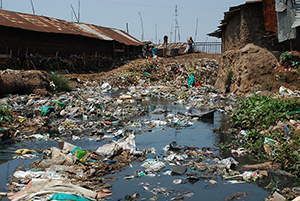
Marshall Islands. Micronesian stick navigation chart.. National Geographic. Marshallese Stick Chart
Archipelagos are defined by a special geographical configuration constituted by a close grouping of islands situated in a specific maritime environment. On the planet there are several hundred archipelagos, of which just over forty have been consolidating a metropolitan situation, characterized by the concentration of hundreds of thousands of people in various urbanized and interconnected island spaces.
In this generic archipelagos context, it can theoretically be established that an archipelago is characterized as a metropolitan insular system of intermediate character when it has a specific area defined between the 430 km2 of Barbados in the Caribbean and 90,000 km2 of the twenty-six Maldives islands which are located in the Indian Ocean. The size of its current population can also be considered as a framework parameter in this objective, defining a range between 250,000 (Azores) and 2,5 million people, in which there is an island with a metropolitan area (with more than 45,000 inhabitants, at least) and that it has essential communication infrastructures such as port and international airport. These relatively inhabited territories located in the great oceans and seas are geographical spaces that present diverse conditions and that could be identified like metropolitan insular systems.
Out of these margins -so defined- would be the great archipelagos and the large urbanized islands, like Hong Kong and Singapore; As well as large isolated land masses such as Iceland, Madagascar or New Zealand. This effort to frame patterns aims to characterize a geographical group of intermediate situations that should be analyzed to establish its conditions and characteristics, those essential for development at a contemporary stage of great historical volatility. Although at the cost of excluding the case of large Asian cities that represent exemplary processes of urbanization in strategic enclaves that should be considered on a prospective focus. From this perspective, the island state of Singapore represents an interesting example of success with its 5,5 million inhabitants residing on a sparse surface of 700 km2. And yet, in consideration of its strategic position, it has reached one of the most advanced economic and human developments on the planet.
Within this generic range in which metropolitan insular systems of intermediate character, the Macaronesian region of the Azores, Madeira, the Canaries and Cape Verde plays a leading role. Archipelagos that fulfill all the characteristics indicated and that represent a geographic space in the Middle Atlantic inhabited by 3,100,000 people. In this group, the Canary Islands express a successful development process, supported by several metropolitan urban areas with populations over 200,000 inhabitants and from there very powerful air, sea and telecommunications connections can be established with the rest of the world.
It is these small and medium metropolitan island systems – considered as urbanized areas – places that establish their network of integration in the world system in an eminently nodal way. In contrast to the urban nuclei of the continental territories, which function as central poles of vast oriented surface areas attracted by the central spaces of the city of reference for which they function as supporting hinterlands. The future prospects of these oceanic and maritime enclaves of urbanized constellations are very extensive and focus on the enormous capacity to attract activity at different scales: local – both in its internal urban and island organization and at regional level – between nearby islands and with the nearest continental masses. Here again, it is important to consider the value of the historically established cultural and / or geographic linkage that clearly establishes preferential access to the global economic complex and thus to other nodes of world activity.
Knowing the ways and means of organization of these metropolitan insular systems is a strategic activity as a resource for a sustainable development of each geographic space so characterized. Today, urbanized archipelagos are terrestrial surfaces isolated by the sea and, because of this, they are essentially fragile living spaces in a situation of increasing scarcity of resources and gradual global warming. The long-term sustainability of metropolitan island areas depends, therefore, on intelligent local governance that considers a future of gradual energy shortage. And also of the progressive difficulty that will arise for the provision of water and food, as well as for the obtaining other essential goods for the development and viability of those human communities.
Due to all of this, the need arises to have efficient communication and knowledge mechanisms among these archipelagic spaces: means for transfer innovative ideas with agility. Ideas that allow us to deal with a future that presents itself stimulating at the least.
Next May it’s going to be held in the island of Tenerife an International Meeting for sharing experiences on metropolitan island systems. This event will receive ideas of experts from UNESCO, Mauritius, Malta, Reunion, Madeira and the Canary Islands.
You can find more information about this meeting in the Official Site: INTERMEDIATE URBAN ISLANDS INFLUENCE






